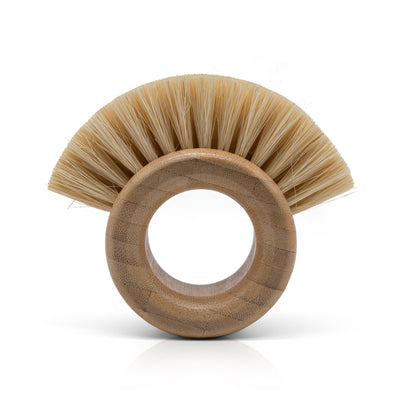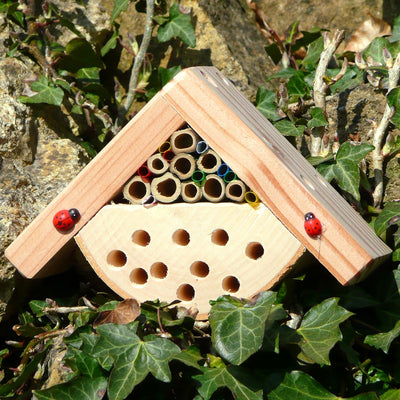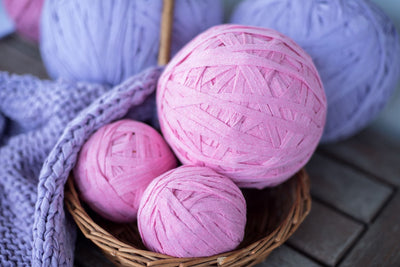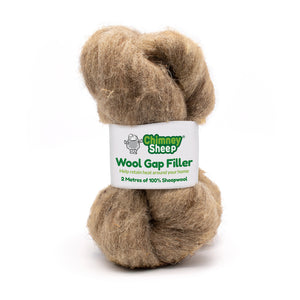How do you apply the sheep wool pipe lagging?
Start at one end of the pipe, wrap the pipe lagging around a section, secure with paper tape. Then wrap around the length, ensuring to leave no gaps. Once you’ve reached the end secure with paper tape.
What is this natural pipe lagging made of?
This pipe lagging is made of our special moth-proofed felt that we use for the Chimney Sheep. It is a dense felt made of 100% Herdwick wool from local Lake District farms.
Most ‘wool’ pipe lagging on the market contains a proportion of mixed plastic or artificial fibres to help bulk it out. Not ours! Our wool pipe lagging consists of densely felted wool.
What are the benefits of using wool pipe insulation?
Wool is a high-performance material, and you’ll be reaping a whole load of benefits:
- Wool is a fantastic natural insulator, it traps air between its fibres meaning it naturally holds heat in places it ought to be – it prevents heat escaping by conduction.
- It's breathable, meaning it helps prevent damp from accumulating. Moisture can easily pass through wool, meaning when you use wool as a building material, you’re reducing the risk of damp building up.
- Wool is hygroscopic which means it actively absorbs and holds water, taking it out of the surrounding environment – without it actually feeling or being wet to the touch (or against other materials) this means it’s really good for damp environments, as it’ll absorb some of the dampness and hold it away from other materials. Being breathable, the wool is naturally wicking too – it wicks away moisture.
- It is naturally antibacterial, purifies air, absorbs chemicals and VOCS trapping them within its fibres permanently, meaning it’s a wonderful choice for questionable areas of the home where you might not be so sure as to the quality of the paint or materials – wool will help purify the area and absorb airborne pollutants.
- This British wool is sustainable. It’s shorn from the sheep once per year (it simply grows back the year after), it’s a fantastic natural carbon store, it’s renewable and it is locally sourced from within the UK – this means by choosing wool pipe lagging, you won’t be damaging the environment.
How do you apply the sheep wool pipe lagging?
Start at one end of the pipe, wrap the pipe lagging around a section, secure with paper tape. Then wrap around the length, ensuring to leave no gaps. Once you’ve reached the end secure with paper tape.
What is this natural pipe lagging made of?
This pipe lagging is made of our special moth-proofed felt that we use for the Chimney Sheep. It is a dense felt made of 100% Herdwick wool from local Lake District farms.
Most ‘wool’ pipe lagging on the market contains a proportion of mixed plastic or artificial fibres to help bulk it out. Not ours! Our wool pipe lagging consists of densely felted wool.
What are the benefits of using wool pipe insulation?
Wool is a high-performance material, and you’ll be reaping a whole load of benefits:
- Wool is a fantastic natural insulator, it traps air between its fibres meaning it naturally holds heat in places it ought to be – it prevents heat escaping by conduction.
- It's breathable, meaning it helps prevent damp from accumulating. Moisture can easily pass through wool, meaning when you use wool as a building material, you’re reducing the risk of damp building up.
- Wool is hygroscopic which means it actively absorbs and holds water, taking it out of the surrounding environment – without it actually feeling or being wet to the touch (or against other materials) this means it’s really good for damp environments, as it’ll absorb some of the dampness and hold it away from other materials. Being breathable, the wool is naturally wicking too – it wicks away moisture.
- It is naturally antibacterial, purifies air, absorbs chemicals and VOCS trapping them within its fibres permanently, meaning it’s a wonderful choice for questionable areas of the home where you might not be so sure as to the quality of the paint or materials – wool will help purify the area and absorb airborne pollutants.
- This British wool is sustainable. It’s shorn from the sheep once per year (it simply grows back the year after), it’s a fantastic natural carbon store, it’s renewable and it is locally sourced from within the UK – this means by choosing wool pipe lagging, you won’t be damaging the environment.































